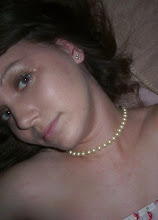Leonardo Drew, Number 123
Curved line- The curve of a line can convey energy. Soft, shallow curves recall the curves of the human body and often have a pleasing, sensual quality and a softening effect on the composition.
Jean Tinguely, Meta-Matic No. 10
Jean Tinguely, Meta-Matic No. 17
Mark Di Suvero, Tire Chair
Vertical line- often communicate a sense of height because they are perpendicular to the earth, extending upwards toward the sky.
Horizontal line- suggest a feeling of rest or repose because objects parallel to the earth are at rest. In a landscape, horizontal lines also help give a sense of space. The lines delineate sections of the landscape, which recede into space. They also imply continuation of the landscape beyond the picture plane to the left and right.
Diagonal line- convey a feeling of movement. Objects in a diagonal position are unstable. Because they are neither vertical nor horizontal, they are either about to fall or are already in motion.
Actual line- lines that are physical present in a design
Implied line- are those that are suggested by the positions of shapes or objects, where as actual lines are physically present.
Sight line- straight lines that have no obstructions
Space- There are two different types of space negative and positive. Positive space is the space taken up by something in an area, and negative space is the space around something in an area. Space is the creation of visual perspective, which gives the illusion of depth.
Presence in Space- refers to the existence in the space around or in an object.
Absence in Space- space that is not fully occupied, or filled to its potential.
Opened Space- refers to space that is not completely enclosed by a line. When properly done the space will act as an environment instead of an end to the piece.
Closed Space- any shape/space completely closed by a line.
Kinetic Form- a movable sculpture
Proximity- a Gestalt principle of organization holding that (other things being equal) objects or events that are near to one another (in space or time) are perceived as belonging together as a unit
Closure- a Gestalt principle of organization holding that there is an innate tendency to perceive incomplete objects as complete and to close or fill gaps and to perceive asymmetric stimuli as symmetric.
















